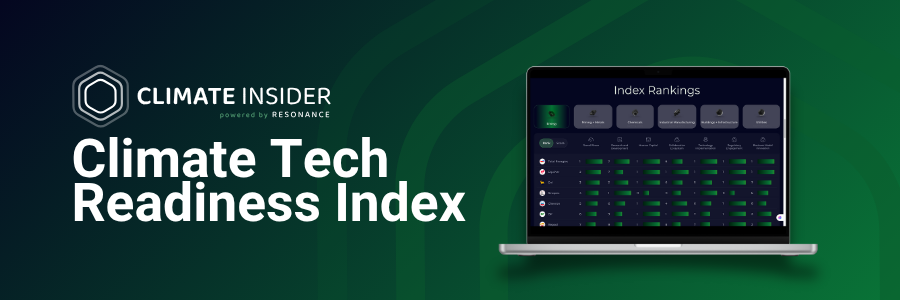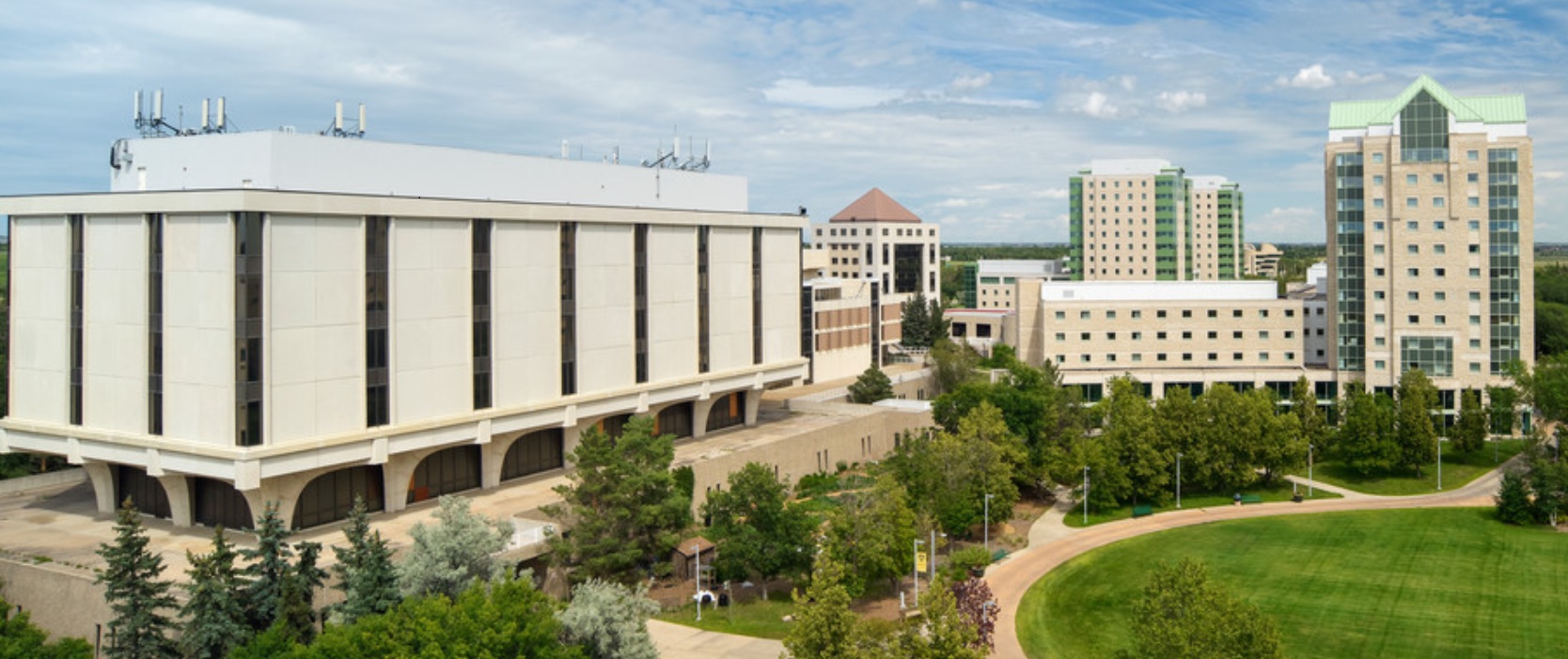Welcome to Climate Tech Pulse, your daily dose of market intelligence helping fuel the fight against climate change. From groundbreaking investments to cutting-edge research, we’re bringing you the latest in climate tech that’s shaping our future.
Don’t miss out on tomorrow’s climate solutions – subscribe now to stay ahead of the curve! https://lnkd.in/dwr7B9XJ
Today’s newsletter:
🔝Today’s Top Story: The Canada Growth Fund (CGF) is investing up to $100 million in Svante Technologies to enhance carbon capture projects in Canada and the U.S.

📊 Today’s Data Point: Data from the IEA and IPCC shows that technologies like Direct Air Capture (DAC) and Carbon Capture and Storage (CCS) are key to meeting U.S. mid-century climate targets.
🌳 Climate Insider Intelligence: Climate Insider’s insights and analysis of Amazon’s 2023 Sustainability Report.
A Carbon-Capture Dream Team: Canada’s Growth Fund and Svante Join Forces with a $100M Partnership
Image Credit: Canada Growth Fund
Partnership and Investment Overview
The Canada Growth Fund (CGF) is investing up to $100 million in the carbon capture and removal leader Svante Technologies to accelerate carbon capture projects in Canada and the US. This funding will support Svante’s pioneering “first-of-a-kind” (FOAK) deployments, with a focus on Canadian projects and international expansion.
Strategic Impact and Goals
The $15 billion public investment vehicle was launched by the Canadian federal government to catalyze private sector investment in Canadian businesses and projects.
Its focus is twofold- transform and grow Canada’s economy towards net-zero emissions while advancing Canadian clean technology and retaining intellectual property within the country. This approach aims to accelerate the reduction of global CO2 emissions—particularly in challenging sectors—while supporting local job creation and fostering innovation.
By strategically investing in companies like Svante, the CGF demonstrates its commitment to positioning Canada as a leader in clean technology development and implementation, contributing to both economic growth and environmental sustainability.
Deployment and Future Plans
The funding will be released in two tranches, with the first $50 million dedicated to immediate FOAK (First-of-a-Kind) project development. Additionally, Svante is constructing a new facility in Burnaby, BC, to manufacture filters capable of capturing 10 million tonnes of CO2 annually. This expansion solidifies Svante’s position in the global carbon capture market. Read More
Quote of the Day
“CGF is working to accelerate the deployment of key Canadian carbon capture technologies, and to scale the manufacturing and export of promising solutions to showcase Canadian technologies internationally. Svante has a tremendous market opportunity, globally and here at home, and we look forward to supporting this company in its growth.”
–Patrick Charbonneau, President and CEO of Canada Growth Fund Investment Management Inc.
Significance: This quote underscores the CGF’s commitment to fast-tracking Canadian carbon capture innovations and scaling them for global impact, positioning Svante front and centre as a key player in the international market.
Market Movers
Image Credit: Mombak’s Reforestation Project
- A new World Bank bond ties investor returns to carbon removal, raising $225 million over nine years to fund Amazon reforestation. The bond is significant as it aligns financial incentives with environmental impact, directly funding Amazon reforestation and carbon reduction efforts. Read More
- Natron Energy plans to invest $1.4 billion in a North Carolina plant to boost its sodium-ion battery production capacity by 40 times, highlighting a significant move toward diversifying battery supply chains and reducing dependence on lithium. Read More
- InBC has invested in Arca Climate Technologies, a B.C.-based company that accelerates carbon mineralization to permanently store atmospheric CO2 in rocks, aligning with the province’s climate action goals. This investment supports a technology with the potential for large-scale global impact by partnering with the critical minerals industry to reduce CO2 levels. Read More
- Heimdal is launching the largest U.S. direct air capture (DAC) facility in northern Oklahoma, aiming to remove 5,000 metric tons of CO2 annually at a cost of under $200 per metric ton. This project, named Bantam, marks a significant step in making DAC technology more affordable and scalable. Read More
Tech Spotlight
Leaf-like Luminescent Solar Concentrator Enhances Optical Efficiency
Researchers at Ritsumeikan University have developed a new leaf-like structure for luminescent solar concentrators (LSCs) that promises significant improvements in optical efficiency. This innovative design involves placing luminescent plates near a luminescent fibre, creating a leaf-like arrangement that optimises photon collection and reduces losses.

Image Credit: SPIE. Digital Library
Commercial Viability
Enhanced Efficiency: The leaf-like structure increases photon collection efficiency by minimizing self-absorption and scattering losses. This is achieved through the use of smaller, modular units that capture and concentrate light more effectively than traditional LSC designs.
Market Potential: By improving efficiency, this technology can make LSCs more competitive in solar energy applications, particularly in building-integrated photovoltaics where aesthetic and performance factors are crucial.
Technical Viability
Advanced Design: The new method enhances understanding of photon collection processes by modelling optical efficiency with various incident light conditions. This allows for precise calculations of performance, improving the design of LSC systems.
Scalability: The modular nature of the leaf-like LSC allows for easy scaling and integration into larger systems. Techniques such as edge mirrors and tandem structures can further enhance efficiency, making this approach versatile for different applications.
Environmental Viability
Improved Solar Utilisation: By increasing the optical efficiency of LSCs, this design reduces material waste and energy losses. The modular, leaf-like structures also contribute to more sustainable solar energy harvesting by efficiently utilising available space and light.
Sustainable Design: The approach aligns with sustainability goals by optimising resource use and reducing the environmental impact of solar energy systems. The ability to replace damaged modules and incorporate new materials further supports long-term environmental benefits.
This new leaf-like LSC structure represents a significant advancement in solar technology, offering a promising solution for enhancing the efficiency and applicability of luminescent solar concentrators. Read More
Policy Pulse
This section includes global updates on climate change policy, governance and regulation.
US Clean Tech investment surges to $493B in two years since the Inflation Reduction Act, driving major growth in clean energy and transportation sectors.
US investments in clean technologies and infrastructure reached $493 billion in the two years following the Inflation Reduction Act, marking a 71% increase. This surge, driven by clean energy, transportation, and manufacturing, highlights the IRA’s impact on accelerating the transition to a low-carbon economy.
Why it Matters: This matters because it demonstrates the significant role of the Inflation Reduction Act in catalysing large-scale investment and growth in the US clean energy sector, crucial for advancing the country’s climate goals and economic transformation. Read More
The US Department of Energy announces $54.4M in funding to advance carbon management technologies for net-zero emissions by 2050.
The U.S. Department of Energy is investing $54.4 million in carbon management technologies to accelerate the capture, storage, and conversion of CO2, essential for meeting the nation’s net-zero emissions target by 2050.
Why it Matters: This funding is crucial for advancing the Biden administration’s goal of achieving net-zero emissions by 2050 and ensuring equitable benefits for communities and workers. Read More
Today’s Climate Data Point
Key Insights on CO2 Pipeline Safety and Infrastructure Development
Source: Pipeline and Hazardous Materials Safety Administration, “Distribution, Transmission & Gathering, LNG, and Liquid Accident and Incident Data.”
Recent findings from the International Energy Agency and the Intergovernmental Panel on Climate Change emphasize the importance of carbon management technologies—such as Direct Air Capture (DAC) and Carbon Capture and Storage (CCS)—in achieving the United States’ mid-century climate goals. Central to this effort is the transportation of carbon dioxide (CO2) via pipelines, which stands as the most efficient method for delivering captured CO2 to geological storage sites.
To provide a clearer picture of the current state and future outlook of CO2 pipeline safety and infrastructure, here’s a breakdown of key data points:
Current CO2 Pipeline Infrastructure:
- Miles of CO2 pipelines operating in the U.S.: Over 5,000 miles
- Average accident rate (2004-2022): 0.001 per mile in operation per year
- Average number of accidents per year: 4.1, with a maximum of nine accidents in a single year
Safety Record Overview:
- First CO2 pipeline accident: 1994 (six years after PHMSA began regulating CO2 pipelines)
- Average total property damage from CO2 pipeline accidents (since 2010): $91,200 (2023 dollars)
- Property damage comparison: CO2 pipeline accidents typically result in significantly less property damage compared to hazardous liquid pipeline accidents, which average $947,700 in damages.
Notable Incidents:
- Satartia, Mississippi (2020): A significant accident caused by natural force damage led to the evacuation of 200 residents and the hospitalisation of 45 people.
Regulatory and Safety Enhancements:
- PHMSA’s Current Safety Measures:
- Annual safety reporting
- Ongoing monitoring for leaks
- Safeguards against overpressure and corrosion
- Recent Legislative Action: Illinois imposed a two-year moratorium on CO2 pipelines pending the completion of updated PHMSA regulations. This legislation also mandates the use of advanced computer modelling to predict CO2 leak dispersal.
- Community Benefits Agreement (CBA): In Nebraska, Tallgrass, Bold Alliance, and local organisations established a CBA, including a $400,000 funding commitment for first responders and a $200,000 training commitment as the project becomes operational.
Outlook: While CO2 pipeline accidents are infrequent, the data underscores the necessity of ongoing regulatory updates and community engagement to enhance safety as the U.S. expands its carbon management infrastructure. Initiatives like Nebraska’s CBA exemplify the crucial collaboration among pipeline operators, local communities, and state authorities in ensuring public safety.
Significance: As the U.S. moves towards its 2050 net-zero carbon emissions goals, the expansion of CO2 pipeline infrastructure, coupled with stringent safety measures, will play a vital role in the successful deployment of carbon management technologies. Read More
In Other News
This section covers notable news highlights in climate tech.
- Cocoon, a startup focused on tackling the climate crisis by decarbonizing heavy industries and developing low-carbon construction materials, has secured £4.2 million in pre-seed funding. Read More
- AWS’s Clean Energy Accelerator, a high-velocity, non-equity dilutive program designed to foster co-innovation between leading Energy, Utilities & Industrial corporations and clean energy & climate tech innovators, recently announced their new 4.0 cohort. Read More
- Startup 280 Earth, a creation of Alphabet Inc.’s moonshot factory, has secured agreements valued at $40 million to capture carbon dioxide from the atmosphere at its newly completed facility in Oregon. Read More
- SDGAcademyX has released a new course, offering in-depth exploration of climate change, focusing on innovative European adaptation strategies, science-based modelling, socio-economic considerations, and digital solutions for achieving net zero goals. Read More
Climate Insider Intelligence: Insights and Analysis of Amazon’s 2023 Sustainability Report
Image Credit: Amazon
Amazon’s 2023 Sustainability Highlights:
- Carbon Cuts: AWS slashed carbon in data centres by 64% using low-carbon concrete and reduced steel usage.
- Water Conservation: Rainwater harvesting and recycling cut water use by 30% in key facilities.
- Eco-Friendly Packaging: The “Frustration-Free Packaging” program eliminated over 1.5 million tons of packaging.
- Ethical Supply Chain: Amazon spent $4.3 billion with diverse suppliers and ensured compliance with labour and environmental standards.
Empowering Employees: Over 100,000 employees are upskilled through the “Career Choice” program. Read More








